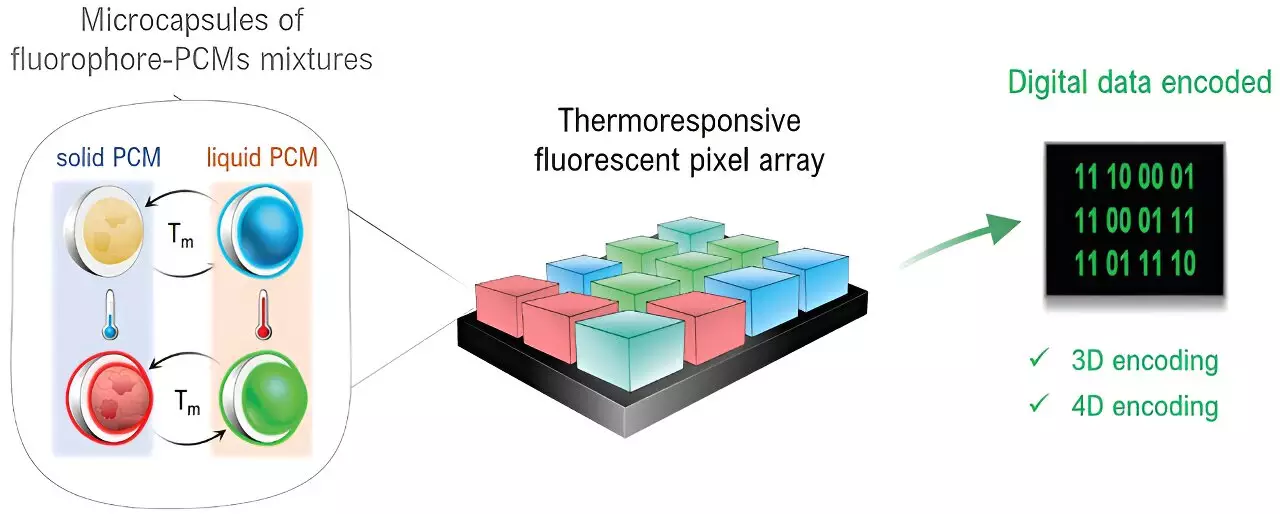Recent advancements in digital encoding have introduced a groundbreaking system that merges microcapsules filled with luminescent dyes with phase change materials. This innovative approach signals a significant evolution in data storage methods, heralding a new era that could impact cybersecurity and authenticate market integrity. The researchers behind this pioneering work include prominent figures such as Dr. Claudio Roscini and Prof. Daniel Ruiz-Molina from the ICN2 Nanostructured Functional Materials Group, alongside collaborators from the Autonomous University of Barcelona. Their findings, showcased in the journal Advanced Functional Materials, reveal a fresh perspective on how information can be efficiently stored and securely encoded.
At the core of this new technology lies a system of microcapsules that combine fluorescent dyes with phase change substances—specifically, paraffins. Well-known for their thermal properties, phase change materials can absorb and release heat in response to temperature fluctuations. This research creatively utilizes the behavior of these materials to create what researchers term “pixels,” each varying in emitted color based on the state of the encapsulated paraffin. The implications of such a system are extensive: data can be encoded not just in two dimensions, like a traditional QR code, but also by manipulating color and incorporating temperature response as a dynamic forth dimension.
This encoding system offers a dual benefit: it is capable of both three-dimensional (3D) data encryption and innovative four-dimensional (4D) data storage. The three dimensions are derived from the spatial arrangement and the color output of the microcapsules, while the fourth dimension is dictated by the thermal response of the materials involved. This multifaceted encoding approach not only increases the complexity and capacity of data storage solutions but also enhances security measures, making it more challenging for counterfeiters to replicate information.
The implications of this development are substantial, particularly in contexts requiring high-density data storage or robust anti-counterfeiting measures. Such technology presents a low-cost yet effective solution that could revolutionize various industries, from finance to pharmaceuticals, by ensuring the integrity and confidentiality of sensitive data. As the technology matures, further refinements are anticipated, potentially yielding even greater encoding efficiency and security.
As the digital world continues to expand at an unprecedented pace, the necessity for reliable and secure data storage becomes more paramount. The integration of luminescent dyes with phase change materials represents a formidable advancement in this realm. This innovative strategy not only highlights the importance of interdisciplinary collaboration in scientific research but also points toward a future where data encoding and storage are more sophisticated and resilient against threats. With ongoing research and development, the possibilities for application are boundless, promising a transformative impact on how we protect and preserve information in the years to come.

